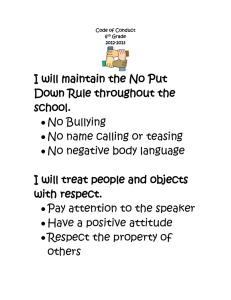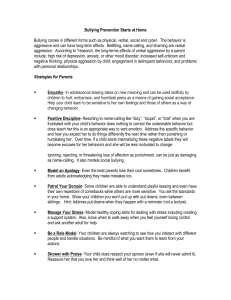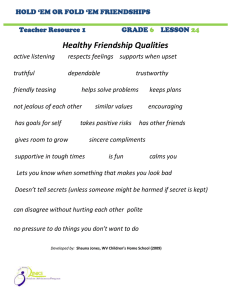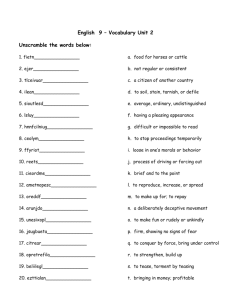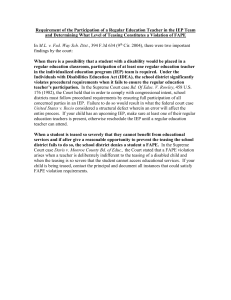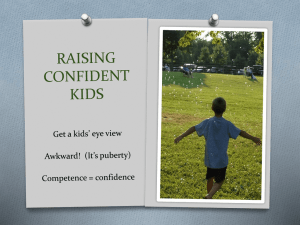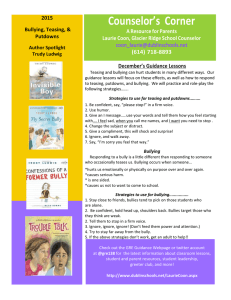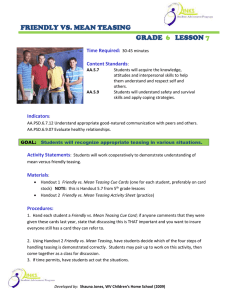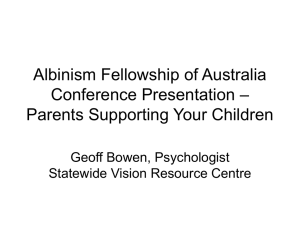What’s In a Name? Name – Calling and Teasing
advertisement
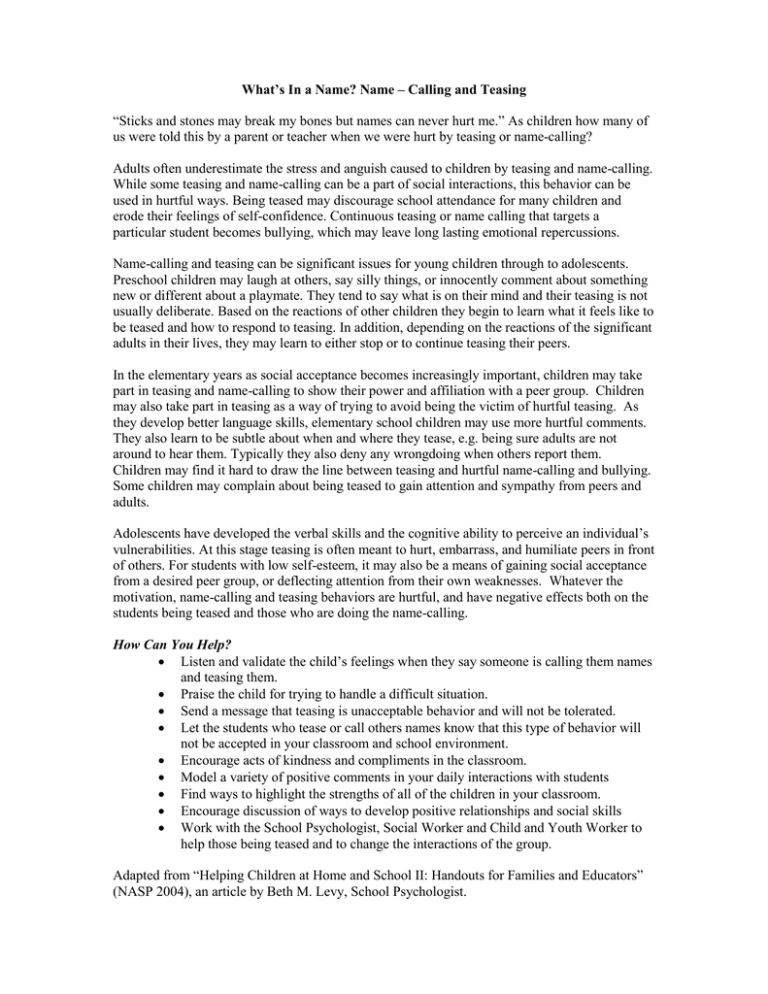
What’s In a Name? Name – Calling and Teasing “Sticks and stones may break my bones but names can never hurt me.” As children how many of us were told this by a parent or teacher when we were hurt by teasing or name-calling? Adults often underestimate the stress and anguish caused to children by teasing and name-calling. While some teasing and name-calling can be a part of social interactions, this behavior can be used in hurtful ways. Being teased may discourage school attendance for many children and erode their feelings of self-confidence. Continuous teasing or name calling that targets a particular student becomes bullying, which may leave long lasting emotional repercussions. Name-calling and teasing can be significant issues for young children through to adolescents. Preschool children may laugh at others, say silly things, or innocently comment about something new or different about a playmate. They tend to say what is on their mind and their teasing is not usually deliberate. Based on the reactions of other children they begin to learn what it feels like to be teased and how to respond to teasing. In addition, depending on the reactions of the significant adults in their lives, they may learn to either stop or to continue teasing their peers. In the elementary years as social acceptance becomes increasingly important, children may take part in teasing and name-calling to show their power and affiliation with a peer group. Children may also take part in teasing as a way of trying to avoid being the victim of hurtful teasing. As they develop better language skills, elementary school children may use more hurtful comments. They also learn to be subtle about when and where they tease, e.g. being sure adults are not around to hear them. Typically they also deny any wrongdoing when others report them. Children may find it hard to draw the line between teasing and hurtful name-calling and bullying. Some children may complain about being teased to gain attention and sympathy from peers and adults. Adolescents have developed the verbal skills and the cognitive ability to perceive an individual’s vulnerabilities. At this stage teasing is often meant to hurt, embarrass, and humiliate peers in front of others. For students with low self-esteem, it may also be a means of gaining social acceptance from a desired peer group, or deflecting attention from their own weaknesses. Whatever the motivation, name-calling and teasing behaviors are hurtful, and have negative effects both on the students being teased and those who are doing the name-calling. How Can You Help? Listen and validate the child’s feelings when they say someone is calling them names and teasing them. Praise the child for trying to handle a difficult situation. Send a message that teasing is unacceptable behavior and will not be tolerated. Let the students who tease or call others names know that this type of behavior will not be accepted in your classroom and school environment. Encourage acts of kindness and compliments in the classroom. Model a variety of positive comments in your daily interactions with students Find ways to highlight the strengths of all of the children in your classroom. Encourage discussion of ways to develop positive relationships and social skills Work with the School Psychologist, Social Worker and Child and Youth Worker to help those being teased and to change the interactions of the group. Adapted from “Helping Children at Home and School II: Handouts for Families and Educators” (NASP 2004), an article by Beth M. Levy, School Psychologist.
